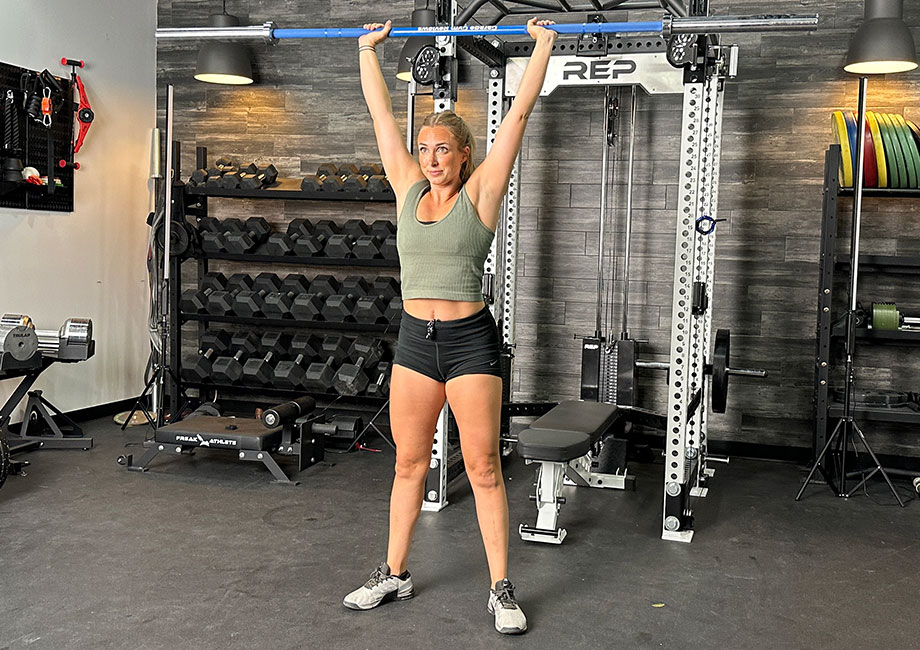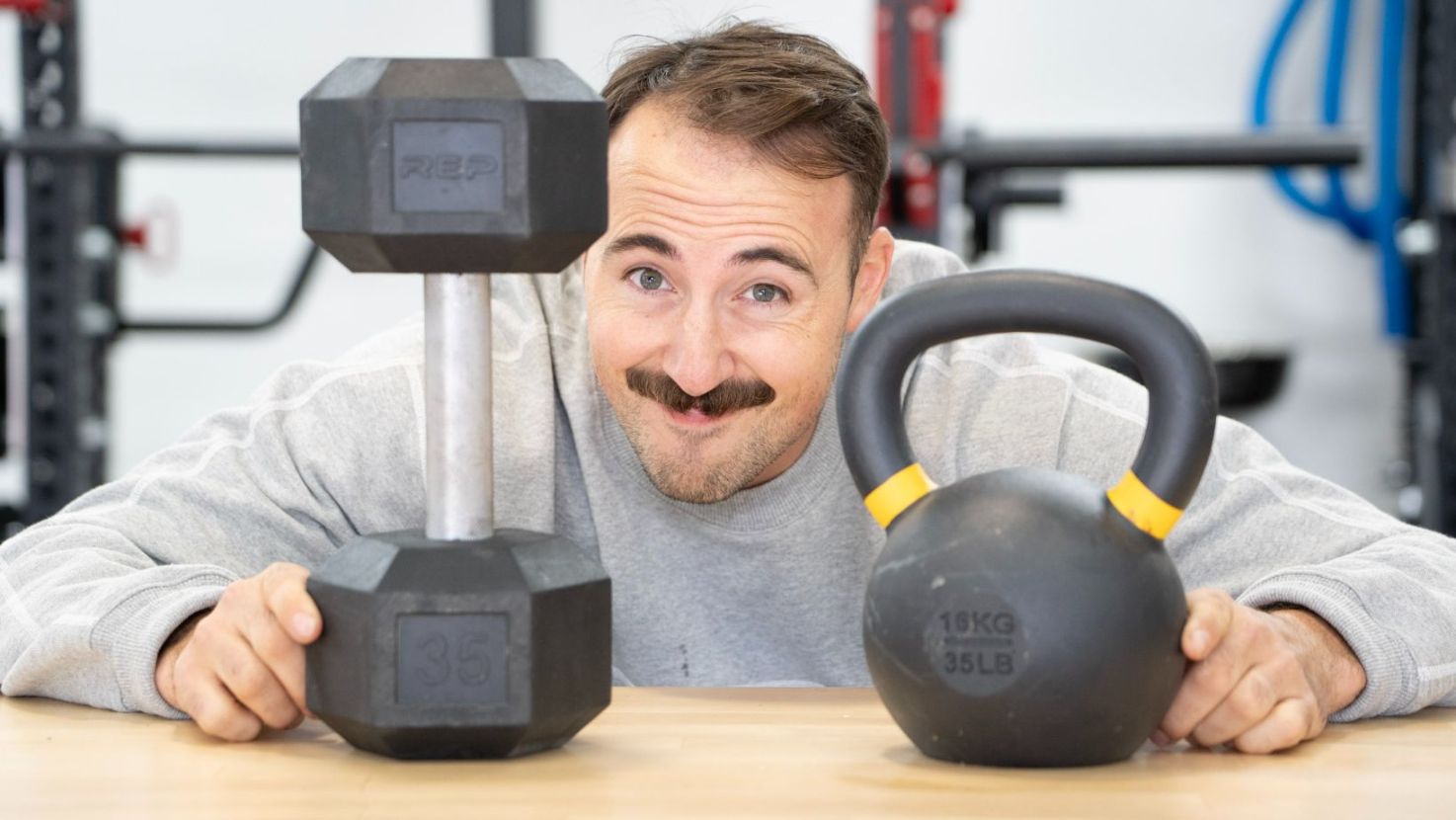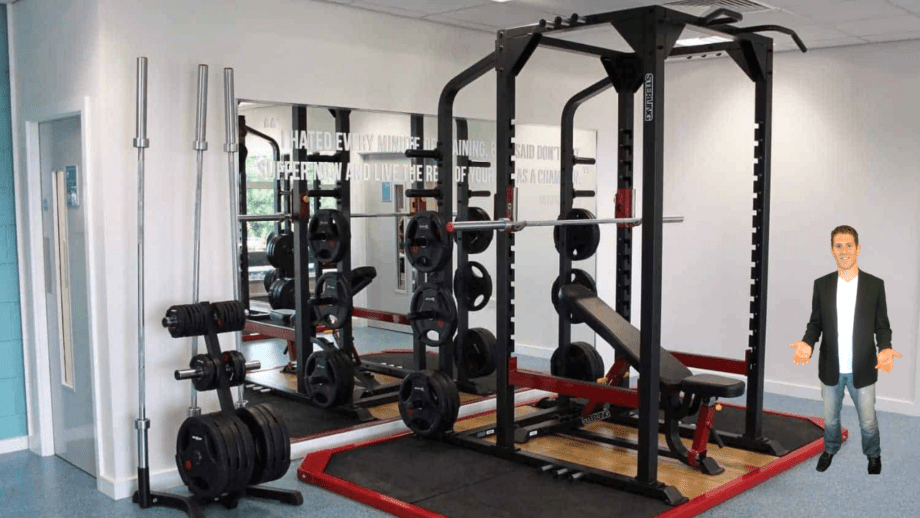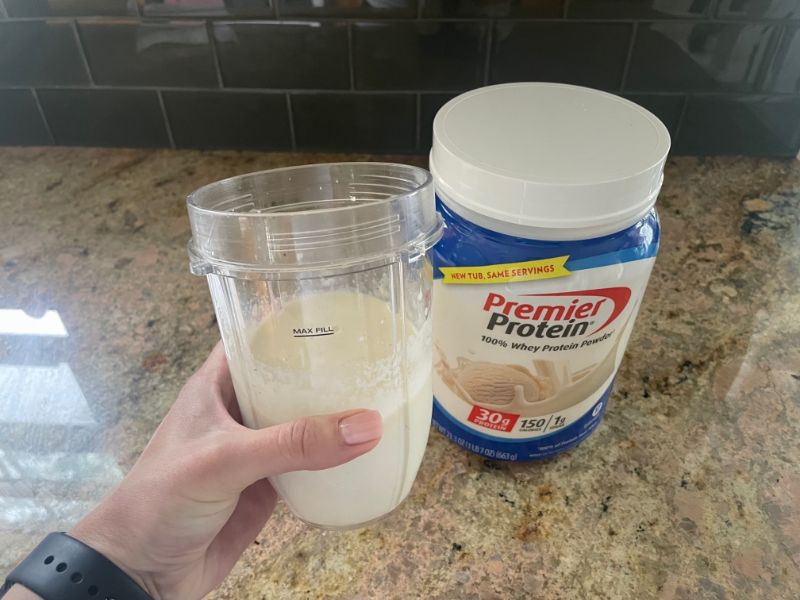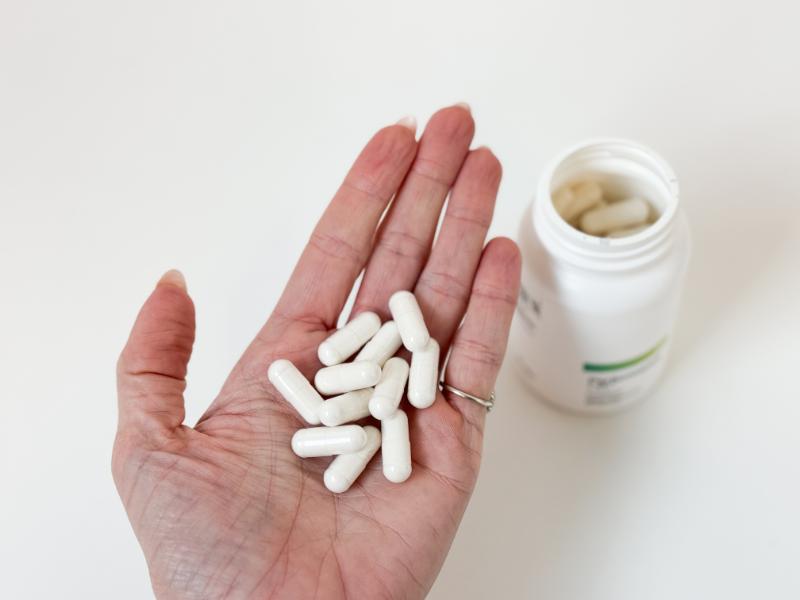Choosing the right workout split for your current situation and fitness goals can sometimes feel like a minefield. I’ve been there. When I started my fitness journey 10 years ago, getting to the gym was difficult enough. I didn’t want to have to think about the exercises I needed to do, the order to do them, and how to do them with proper form.
Luckily for you, I’ve tried nearly every split out there. Although I like full-body and upper-lower workouts, my all-time recommendation to clients as a certified personal trainer (CPT) is push-pull-legs—I currently do this split myself!—this is especially the case once my clients have more weight training experience and lift between three and six times a week.
On pull day, you hit the back and biceps. Leg day involves activating the hamstrings, quads, calves, lower back, and core. And on push day, you obliterate the chest, shoulders, and triceps. The aim here is to focus on the latter. I’ll explain the best push day exercises and how to do them correctly before going through push day workouts for different fitness levels.
11 Best Push Day Exercises
Are you ready to turn your push day up to 11? Below are the best push day exercises I’ve handpicked for you to try, followed by my tips on how to perform them:
- Barbell Bench Press
- Dumbbell Bench Press
- Dumbbell Shoulder Press
- Push Press
- Military Press
- Chest Fly
- Dumbbell Lateral Raise
- Triceps Pushdowns
- Dips
- Skull Crushers
- Push-Ups
Barbell Bench Press
Muscles Worked: Chest (pectoralis major and minor), anterior deltoid, triceps
Why do it: It’s a compound exercise that can build serious muscle mass in the chest, shoulders, and triceps. A 2017 Frontiers in Physiology1 study found that multi-joint exercises such as bench presses can be more efficient for improving muscle strength and maximal oxygen consumption when compared to programs involving single-joint exercises.
How to do it:
- Load the barbell with your preferred weight.
- Lie down with your feet flat on the floor and your eyes underneath the bar.
- With a firm overhand grip, take hold of the bar. You’ll want your hands to be slightly wider than shoulder-width apart.
- Brace your core, and then unrack the barbell. Slowly bring it down toward your chest.
- Pause before pushing the bar to the original position.
- Continue for the desired number of reps. Then, re-rack the barbell.
Expert tip: Instead of traditional barbell bench presses, you can also do incline bench presses or close-grip bench presses. The former places more emphasis on the upper chest compared to regular bench presses, while the latter isolates the triceps because of the closer grip2.
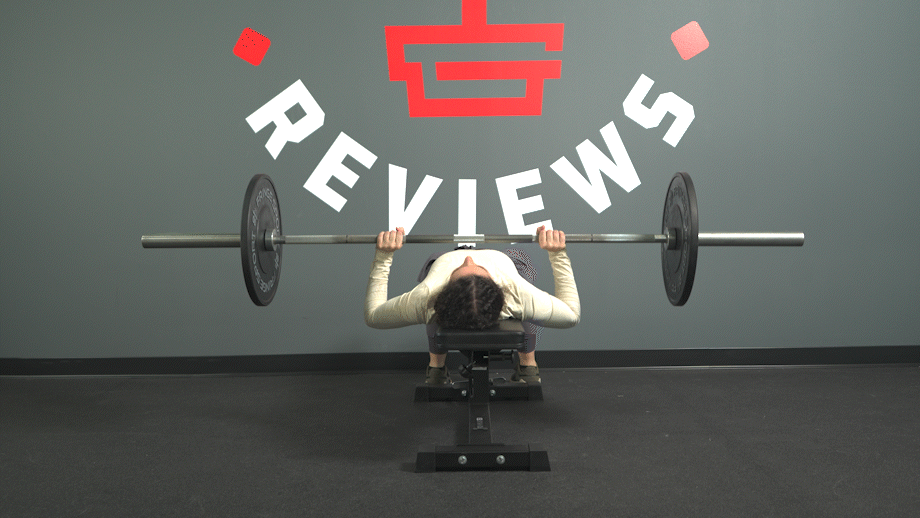
Dumbbell Bench Press
Muscles worked: Chest, shoulders, triceps
Why do it: Dumbbell bench presses are a fantastic alternative to barbell bench presses. They build muscle in the chest, shoulders, and triceps without needing a barbell and weight plates. Because each hand is working on its own (unilaterally), one hand can’t do more work than the other, which may help fix muscular imbalances.
How to do it:
- Place a pair of dumbbells on the floor in front of a flat bench.
- Grab the dumbbells with a neutral grip (palms facing each other) and sit down. You’ll want to rest the dumbbells on your quads.
- Lie backward, positioning the dumbbells outside of your torso by your chest region. This is the starting position.
- Press the dumbbells upward simultaneously until both arms are straight.
- Hold before lowering the dumbbells in a controlled manner. Repeat for reps.
- When you’re done, reverse the motion to come off the weight bench (don’t just throw the dumbbells onto the floor!).
RELATED: Best Dumbbells
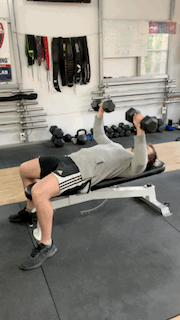
Dumbbell Shoulder Press
Muscles worked: Shoulder muscles (anterior, lateral, and posterior delts), triceps, trapezius
Why do it: I love this shoulder exercise because you can do seated dumbbell shoulder presses when you’re able to, but if the bench at the gym is taken, you can also do it standing. As we saw above with dumbbell chest presses, both hands work independently of each other, helping to address bilateral deficits3.
How to do it:
- In either a standing or seated position, place a pair of dumbbells at shoulder height. You’ll want your elbows to be bent and your palms facing away from you.
- Engage your core and ensure your chest is sticking up.
- Press the dumbbells overhead until both arms are extended. The dumbbells should be close to touching each other.
- Pause, then return the dumbbells to the original position.
- Keep going for reps.
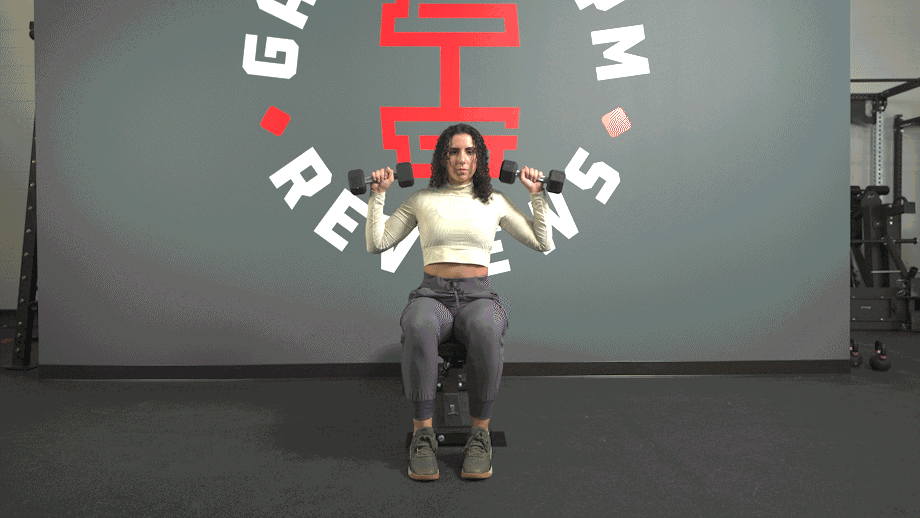
Push Press
Muscles worked: Shoulders, pecs, triceps, upper back, quads, glutes
Why do it: The push press is similar to the military press (which you’ll see below), but you can lift heavier weights because you’re activating your lower body as well as your upper body. Because of the leg drive involved, you may improve your leg power output. This can translate to improvements in activities such as running, sprinting, and jumping.
How to do it:
- Adjust the J-hooks on a squat rack so the bar is at shoulder height. Add the required weight plates.
- Get underneath the barbell with your feet flat on the floor. You’ll want the bar resting on your upper chest and your hands in an overhand grip (palms facing the ceiling).
- Stand up to unrack the bar. Take a couple of steps backward, re-adjusting your feet if necessary.
- With your core activated and chest up, dip downward about five inches. You’ll want your knees to be in line with your toes.
- Drive up using your quads and glutes, and at the same time, press the bar overhead until your arms are straight, then pause.
- Get back into the starting position by lowering the bar and dipping down simultaneously.
- Press for repetitions.
Expert tip: Although I’ve described the barbell push press above, you can replicate this movement pattern with dumbbells, kettlebells, or even a resistance band—check out these variations in our push press exercise article.
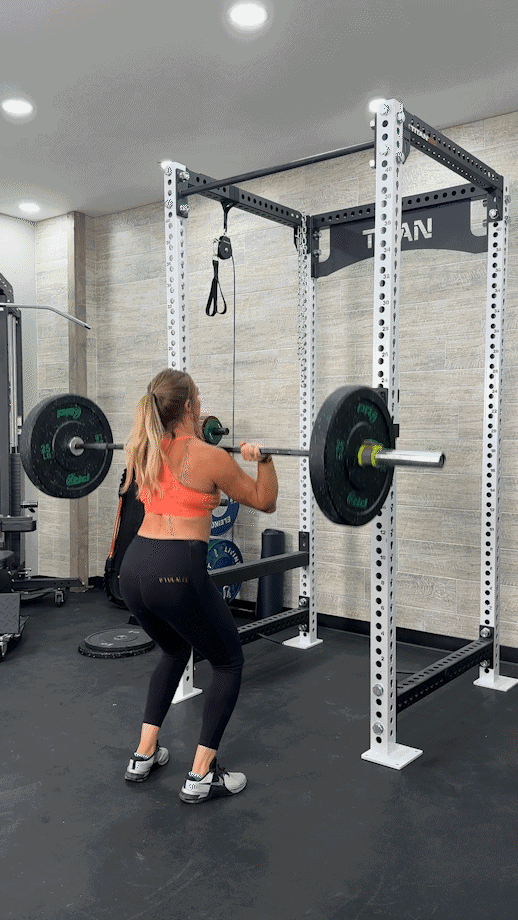
Military Press
Muscles worked: Shoulders, triceps, chest
Why do it: Also known as the overhead press, adding this exercise to your workout routine can increase shoulder stability and reduce the risk of injury to overhead activity athletes4.
As a certified personal trainer, I prefer military presses to push presses (which you saw above) on push day, because although military presses activate fewer muscle groups, I like the stricter form. Try both to see which one you like best.
How to do it:
- Fix the bar on a squat rack or power rack so it’s at shoulder height.
- Step underneath so that the bar is resting on your upper chest. You’ll want your feet to be hip-width apart and your palms facing the ceiling.
- Brace your core and stand up, unracking the bar as you do so. Take a couple of steps away from the squat rack.
- Keeping your head neutral and chest up, press the bar toward the ceiling until your arms are locked out. You may need to tilt your head backward slightly here.
- Pause, before slowly bringing the bar down.
- Continue for the desired number of repetitions. Step forward and re-rack the bar when you’re finished.
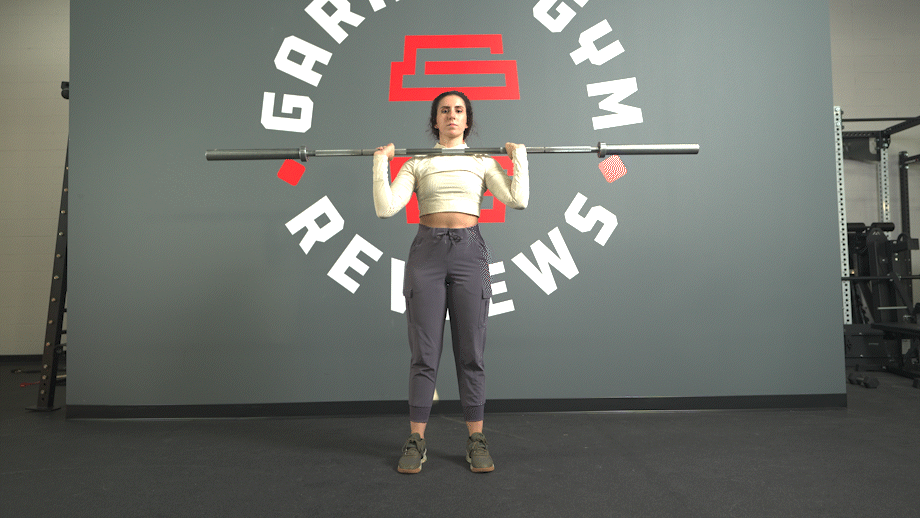
Chest Fly
Muscles worked: Chest, shoulders, triceps
Why do it: The chest fly is an isolation exercise that helps with hypertrophy of your chest muscles. When you perform the movement with a full range of motion, it’ll open up your chest, reducing tightness in the upper body. Also, because you need to retract your shoulder blades to perform the chest fly effectively, you may see improvements in your posture.
How to do it:
- Sit down on a flat bench with a pair of dumbbells resting on your quads.
- Lie back, taking the dumbbells with you and position them above your body. You’ll want your arms extended and the dumbbells touching each other.
- Lower the dumbbells to the sides, ensuring that you have a slight bend in your elbows.
- When you can’t lower them any further, pause. Then, slowly bring them back up.
- Repeat for reps.
Expert tip: The above involves doing the chest fly workout on a flat bench. You can adjust the bench so it’s at a 45-degree angle to hit the upper chest more directly, use a chest fly machine found in most gyms, or use a cable machine.
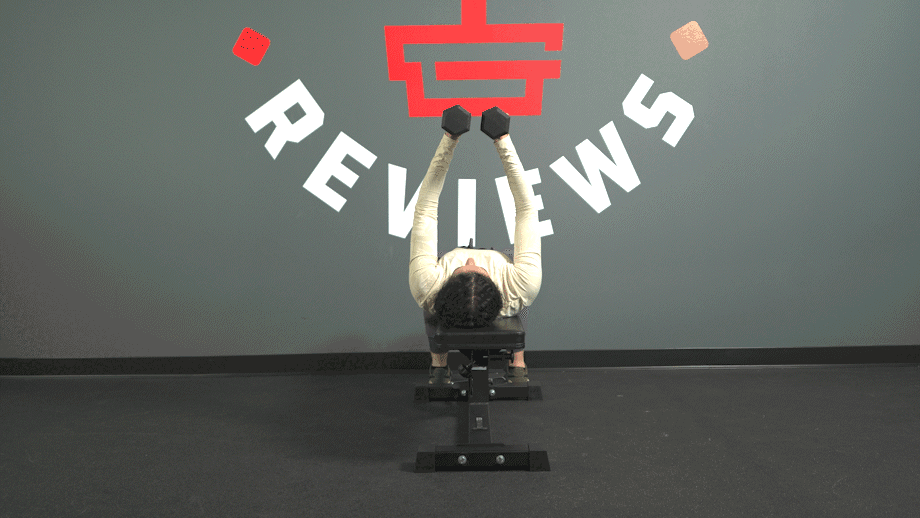
Dumbbell Lateral Raise
Muscles worked: Deltoids (lateral and anterior)
Why do it: As the name suggests, the lateral raise is a great exercise to isolate the lateral deltoids. To ensure good form, use a lighter weight and focus on the mind-muscle connection5. If you want to remove your legs from the equation—and therefore, the ability to cheat on your reps —I recommend you sit down while doing lateral raises.
How to do it:
- Stand upright, holding a pair of dumbbells. You’ll want your arms by your sides, your feet hip-width apart, and your head neutral.
- Squeeze your glutes, tense your core, and raise your arms to the sides. Keep going until your arms are in line with your shoulders.
- Hold for a moment, then bring the dumbbells back down to your hips.
- Raise for repetitions.
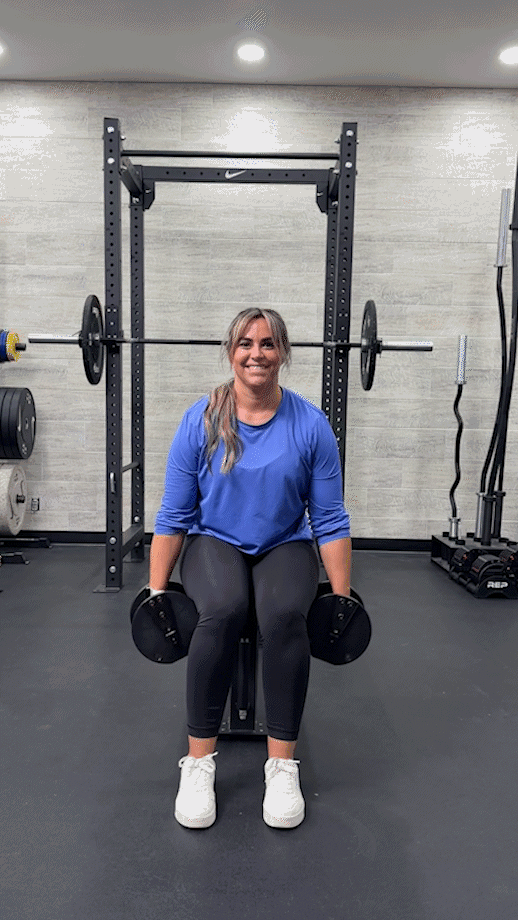
Tricep Pushdowns
Muscles worked: Triceps
Why do it: Compound exercises such as bench presses and military presses hit the triceps to an extent, but the aim of these pushing movements isn’t to isolate them. This is where triceps pushdowns (aka triceps extensions) come in. You’ll need to use a lighter weight than on a bench press, but doing so will set your triceps on fire.
How to do it:
- Fasten a rope attachment to one side of a cable machine, then position the pulley in the top position. Choose your desired weight.
- Stand facing the weight stack with your feet shoulder-width apart and knees slightly bent. Grab the rope with a neutral grip (palms facing each other).
- Pull the rope down so it’s near your chest region until your arms are at a 90-degree angle. This is the starting position.
- Push down to straighten your arms, focusing on working the triceps muscles.
- Pause, then return the rope to its original position.
- Keep going for reps.
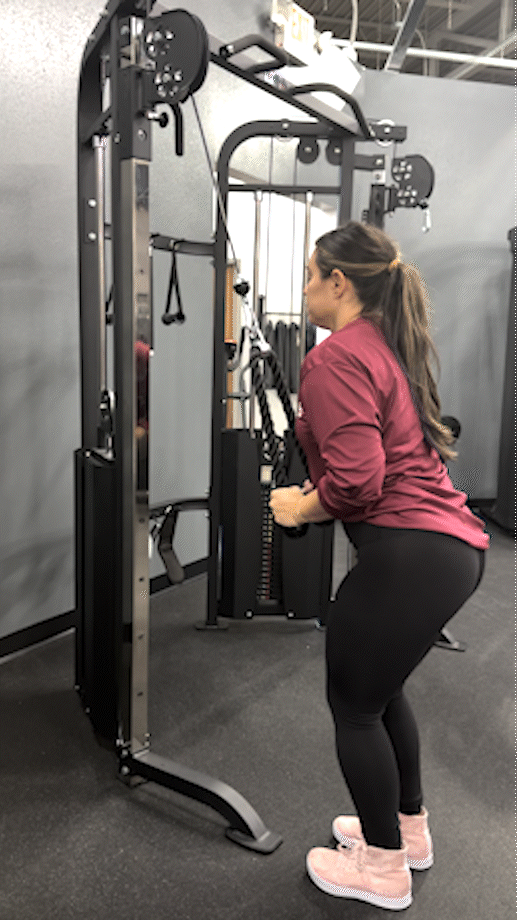
Dips
Muscles worked: Triceps, chest, shoulders, core
Why do it: If you’re looking for upper body muscle growth using just your body weight, then dips are a great addition to your push day routine. They can also be progressed as you build strength. A 2022 study by the International Journal of Environmental Research and Public Health6 compared bench, bar, and ring dips. It found that bar dips are an appropriate progression from bench dips. Then, you can progress to ring dips if bar dips are too easy and you want to activate the muscles worked by dips to a greater extent.
How to do it:
- Step onto the dip station, and take hold of the handles with a neutral grip.
- Jump up so your feet come off the platform and your arms are extended. This is the starting position.
- Slowly bend at the elbows so your body moves toward the ground. Keep going until your elbows are at 90-degree angles.
- Hold for a moment, then return to the original position.
- Dip for repetitions.
Expert tip: If unable to do bodyweight dips using parallel bars, use a bench or plyo box instead. Sit on the edge of a flat bench with your fingers pointing forward and place your feet firmly on the floor. Lower yourself down until your elbows are at 90-degree angles, pause, and push yourself back up.
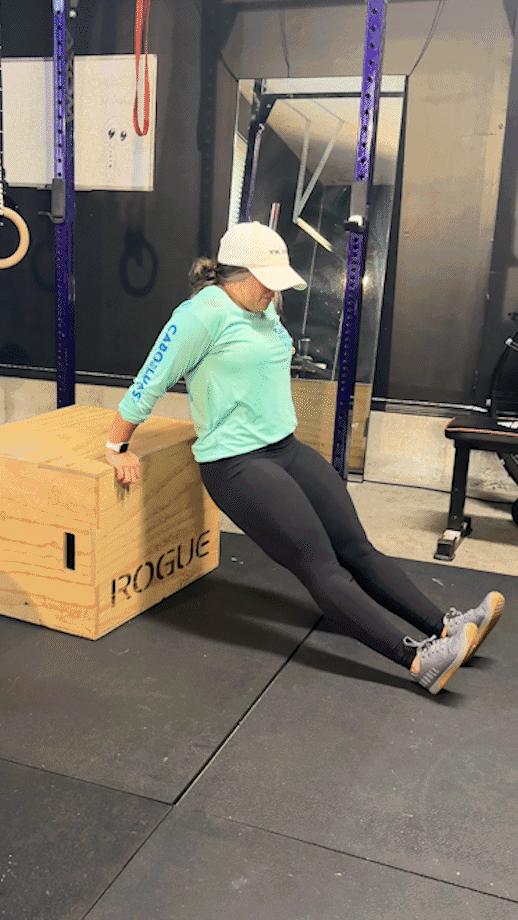
Skull Crushers
Muscles worked: Triceps
Why do it: Lifters love skull crushers because they build muscle in the upper arm and can get you stronger at other push day exercises on this list. Increasing the strength and size of the triceps has a direct carryover to bodybuilding exercises such as bench presses and push presses because the final portion of the movement is all about using the triceps.
How to do it:
- Add the required weight to an EZ-bar or straight bar.
- Sit down on a flat or incline bench, resting the bar on your thighs.
- Lie back, taking the bar with you. You’ll want to position it above your chest so your arms are extended and your hands are slightly wider than shoulder-width apart.
- Keeping your elbows tucked in, lower the bar to your forehead. Pause, then slowly push the bar back to the top position.
- Continue for the desired number of reps.
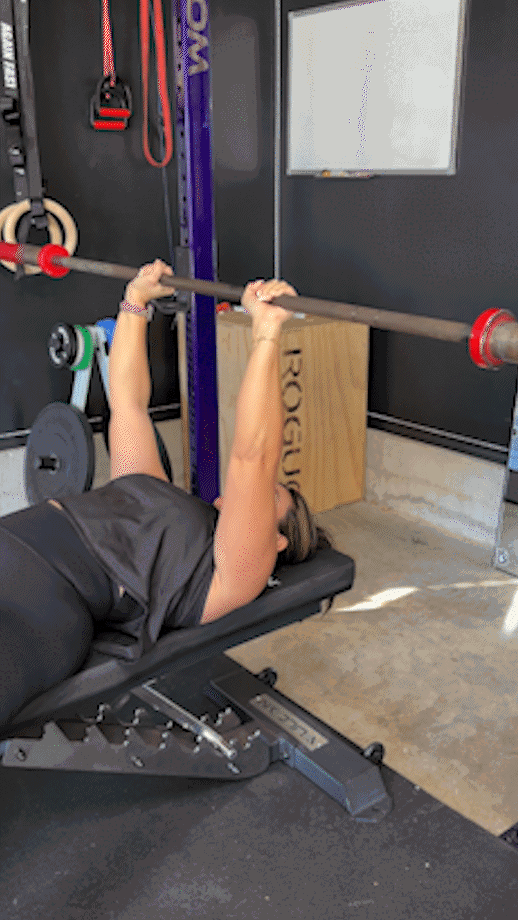
Push-Ups
Muscles worked: Chest, shoulders, triceps
Why do it: Push-ups can be done anywhere because they require no equipment. There are many variations so it’s simple to progress or regress standard push-ups depending on your current ability and fitness goals.
A 2019 study by the Sports Medicine International Open7 found that push-ups and bench presses (which you saw above) can be used interchangeably.
How to do it:
- Begin in the high plank position. You’ll want your palms on the floor, shoulder-width apart, and your arms straight.
- Brace your core and squeeze your glutes. With your elbows tucked in, bend them so your body moves toward the floor.
- When your chest is as close to the ground as possible, pause.
- Push through your palms to return to the high plank position.
- Repeat for reps.
Expert tip: If you want to replicate different intensities of bench presses with push-ups, use a weighted vest.
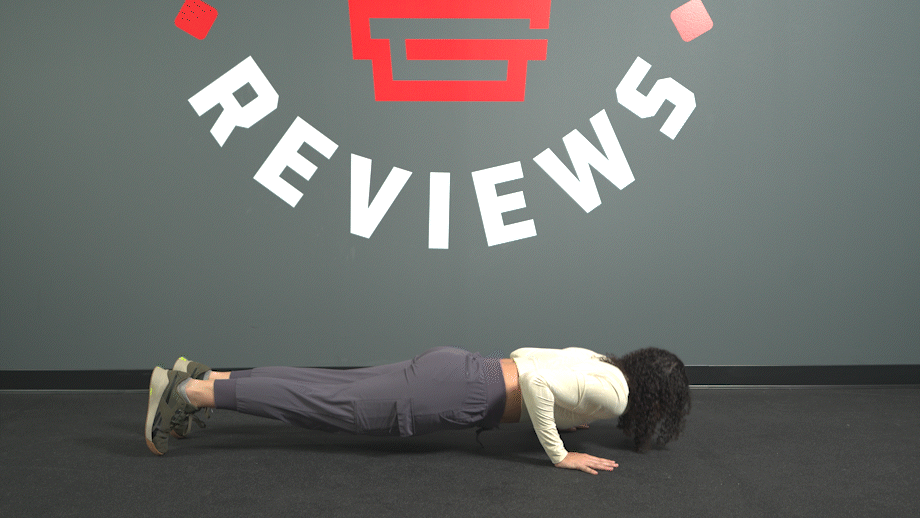
Benefits of Push Day Exercises
There are several advantages and benefits to performing push day exercises as part of your training split. Here are my top three benefits:
Builds Muscle In The Chest, Shoulders, And Triceps
Push day exercises build muscle in the chest, shoulders, and triceps. Let’s be honest—one of the main reasons we train is to look and feel strong, and that’s exactly what you get here. You may be able to increase total volume per week by working all three muscle groups together, resulting in more muscle growth compared to training each muscle individually.
RELATED: Chest, Shoulders, and Triceps Workouts
More Time To Recover
Following a push-pull-legs split allows your body to recover fully before your next push day. Let’s say you do a push day on Monday, a pull workout on Tuesday, and a leg workout on Wednesday. You’ll probably rest on Thursday, meaning your pushing muscles won’t activate again until Friday, giving you four days to recover.
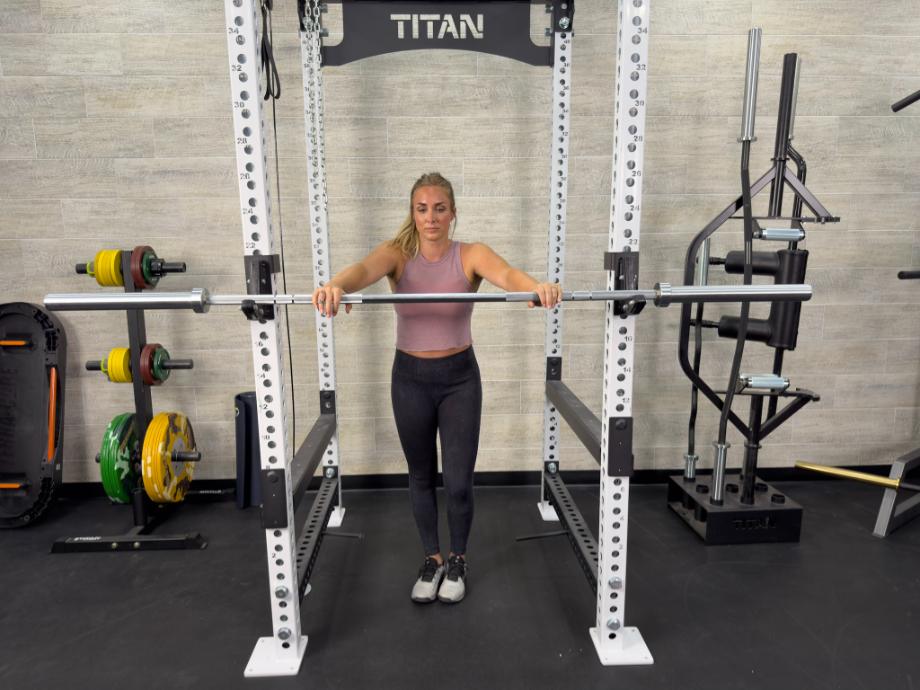
The downside of working the chest, shoulders, and triceps separately is that they never fully recover because the muscles complement each other, which isn’t the case with a push day workout.
Time Efficient Workouts
Within an hour (give or take!) you can train three muscle groups on your push day. In the past, I’d do chest day, shoulders day, and arm day separately—all of which took an hour each. Granted, a push day workout may not hit the biceps, but it activates everything else. Because your triceps are already tired with the chest and shoulder exercises, you won’t need much more for them.
Push Day Workout
Now you understand the benefits of push day exercises, let’s talk about practicalities and how to implement push day workouts into your weekly schedule. I’ll then go through three push day workouts for three fitness goals.
Training Split For Push Day
First things first. There’s push day, pull day, and leg day. Your training split depends on the number of times you’re able to exercise per week. Let’s say it’s three—your schedule will look like this:
- Monday – Push Day
- Wednesday – Pull Day
- Friday – Leg Day
- All other days – Rest
It doesn’t matter which workout you do first (you can do leg day on a Monday if you’d like to get it out of the way!) but try to include a rest day between each session.
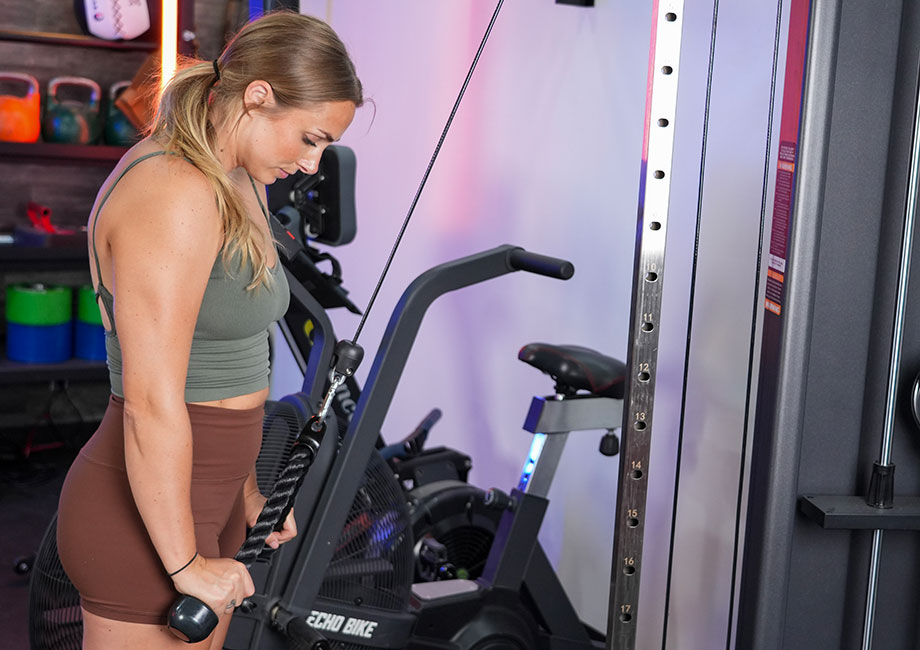
If you’re training six times a week, your split will be slightly different:
- Monday – Push Day
- Tuesday – Pull Day
- Wednesday – Leg Day
- Thursday – Rest
- Friday – Push Day
- Saturday – Pull Day
- Sunday – Leg Day
For those exercising four or five times a week, cycle between push, pull, and leg workouts. You’ll never start the week with the same workout. For some weeks, you’ll do two push workouts and others one.
Expert tip: If you can’t commit to three workouts a week minimum, I’d recommend doing full-body workouts instead of this workout split. At a minimum, you want to hit every muscle group in the body at least once per week.
Best Push Day Workout For Beginners
Beginners can do the following workout:
| Exercise | Sets | Reps |
| Dumbbell Bench Press | 3 | 8 |
| Dumbbell Shoulder Press | 3 | 8 |
| Chest Fly | 2 | 10 |
| Dumbbell Lateral Raise | 2 | 10 |
| Triceps Pushdown | 2 | 12 |
Best Push Day Workout For Hypertrophy
Let’s take it to the next level. To build muscle, do the following push day workout:
| Exercise | Sets | Reps |
| Barbell Bench Press | 4 | 6 |
| Military Press | 4 | 8 |
| Chest Fly | 3 | 8 |
| Dumbbell Lateral Raise | 3 | 10 |
| Skull Crusher | 3 | 12 |
| Push-Up | 3 | AMRAP (as many reps as possible) |
Best Bodyweight Push Day Workout
If you’re looking to use your body weight only, superset the following two exercises:
| Exercise | Sets | Reps |
| Dips | 5 | 8 |
| Push-Up | 5 | 12 |
Expert tip: I wouldn’t stick to just regular push-ups here. Use pike push-ups to activate the deltoids and upper chest, close-grip push-ups to hit the triceps, and weighted push-ups to increase the intensity. Play around with different push-up variations to make the most out of the workout.
Push Day Exercises: Final Thoughts
My all-time favorite workout split is the push-pull-legs routine, and believe me, I’ve tried many different splits over the past 10 years. The benefits of push day exercises include increased muscle growth in the chest, shoulders, and triceps, time-efficient workouts, and giving the body the optimal time to recover before doing another push day workout.
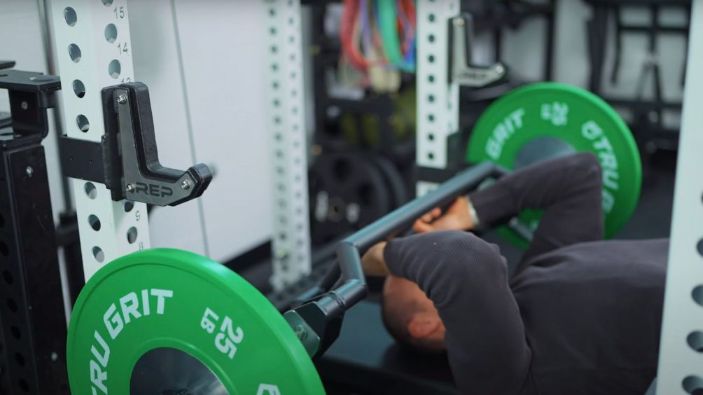
To review, here are my CPT picks for the 11 best push day exercises for you to try:
- Barbell Bench Press
- Dumbbell Bench Press
- Dumbbell Shoulder Press
- Push Press
- Military Press
- Chest Fly
- Dumbbell Lateral Raise
- Triceps Pushdowns
- Dips
- Skull Crushers
- Push-Ups
Push Day Exercises: FAQs
What should I do first on push day?
On your push day, do either a chest or shoulder exercise first; this can be a bench press, dumbbell chest press, dumbbell shoulder press, push press, or military press. The chest and shoulders are bigger muscle groups than the triceps, so it makes sense to work them first.
Alternatively, do a bodyweight exercise like push-ups or dips first to warm up the chest and shoulder muscles.
Are squats push or pull?
Technically, squats are a lower-body push exercise because they target your quadriceps, and you push up through your legs. Exercises that work the posterior chain—e.g. deadlifts or Romanian deadlifts—are considered pull exercises. However, in the push-pull-legs workout split, the legs are in a category of their own and are neither push nor pull.
Is 4 exercises enough for push day?
As a certified personal trainer (CPT), I’d say four exercises are enough on push day if you’re training six times a week (and, therefore, doing push day twice a week). If so, you can do two chest exercises, one shoulder exercise, and one tricep exercise on your first push day. On the second push day, you can do two shoulder exercises, one chest exercise, and one triceps exercise.
If you’re doing push day once a week, I’d aim for six or seven exercises. I appreciate some people have limited training time, so this won’t be possible—if this is you, then four is better than zero. On my push day, I do three chest, two shoulder, and two triceps exercises.
References
- Paoli A, Gentil P, Moro T, Marcolin G, Bianco A. Resistance Training with Single vs. Multi-joint Exercises at Equal Total Load Volume: Effects on Body Composition, Cardiorespiratory Fitness, and Muscle Strength. Front Physiol. 2017 Dec 22;8:1105. doi: 10.3389/fphys.2017.01105. PMID: 29312007; PMCID: PMC5744434.
- Tiwana MS, Sinkler MA, Bordoni B. Anatomy, Shoulder and Upper Limb, Triceps Muscle. [Updated 2023 Aug 28]. In: StatPearls [Internet]. Treasure Island (FL): StatPearls Publishing; 2023 Jan-. Available from: https://www.ncbi.nlm.nih.gov/books/NBK536996/
- Škarabot J, Cronin N, Strojnik V, Avela J. Bilateral deficit in maximal force production. Eur J Appl Physiol. 2016 Dec;116(11-12):2057-2084. doi: 10.1007/s00421-016-3458-z. Epub 2016 Aug 31. PMID: 27582260.
- Niederbracht Y, Shim AL, Sloniger MA, Paternostro-Bayles M, Short TH. Effects of a shoulder injury prevention strength training program on eccentric external rotator muscle strength and glenohumeral joint imbalance in female overhead activity athletes. J Strength Cond Res. 2008 Jan;22(1):140-5. doi: 10.1519/JSC.0b013e31815f5634. PMID: 18296967.
- Calatayud J, Vinstrup J, Jakobsen MD, Sundstrup E, Brandt M, Jay K, Colado JC, Andersen LL. Importance of mind-muscle connection during progressive resistance training. Eur J Appl Physiol. 2016 Mar;116(3):527-33. doi: 10.1007/s00421-015-3305-7. Epub 2015 Dec 23. PMID: 26700744.
- McKenzie A, Crowley-McHattan Z, Meir R, Whitting J, Volschenk W. Bench, Bar, and Ring Dips: Do Kinematics and Muscle Activity Differ? Int J Environ Res Public Health. 2022 Oct 14;19(20):13211. doi: 10.3390/ijerph192013211. PMID: 36293792; PMCID: PMC9603242.
- Tillaar RVD. Comparison of Kinematics and Muscle Activation between Push-up and Bench Press. Sports Med Int Open. 2019 Sep 5;3(3):E74-E81. doi: 10.1055/a-1001-2526. PMID: 31508485; PMCID: PMC6728153.


